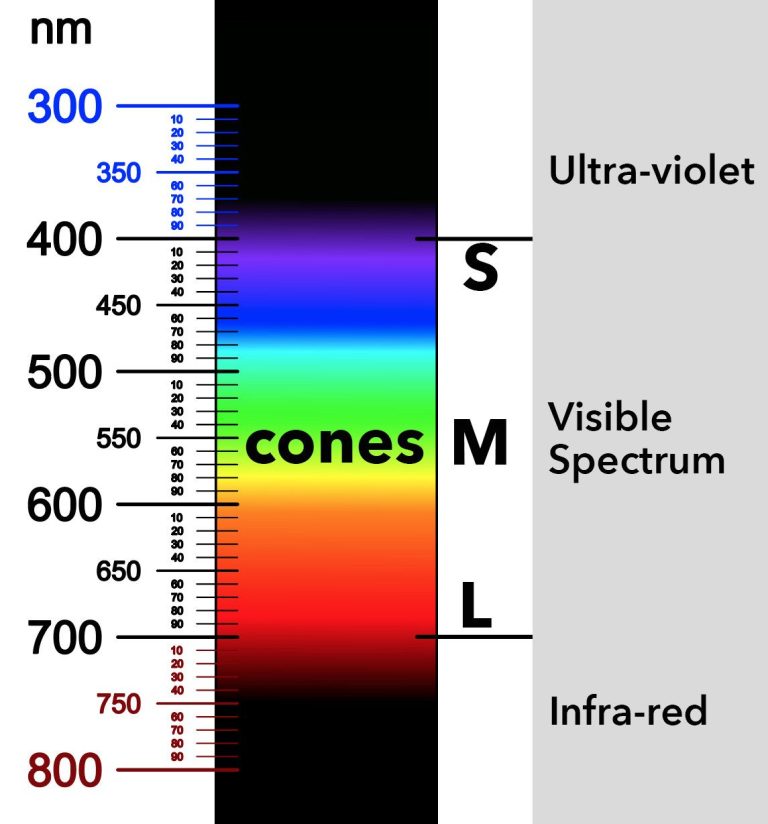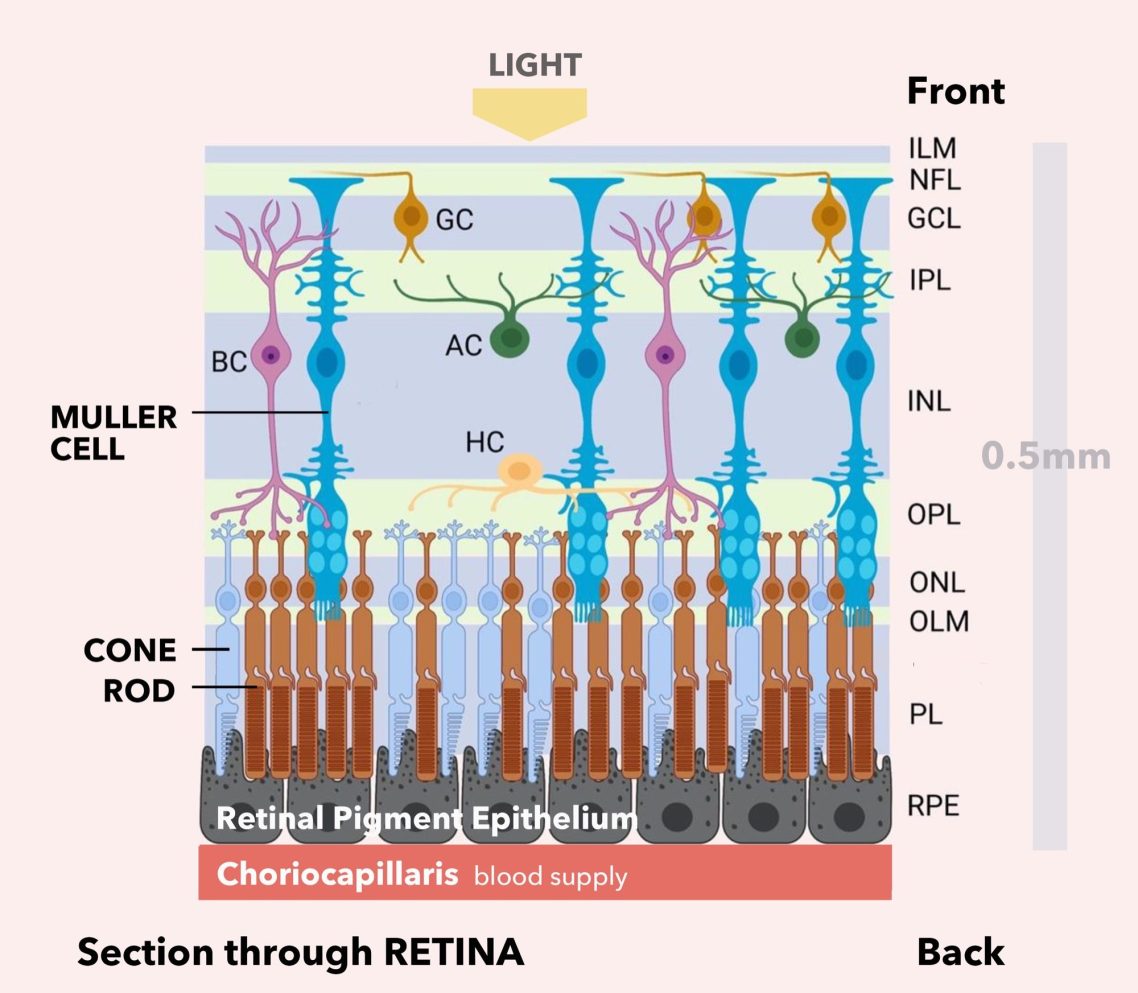19
Seeing is Believing

The eye is amazing, said Charles Darwin.
This is what he said:
"To suppose that the eye with all its... contrivances for adjusting the focus to different distances, for admitting different amounts of light, and for the correction of spherical and chromatic aberration, could have been formed by natural selection, seems I freely confess, absurd in the highest degree". 'On the Origin of Species' 1859
Sadly, his modern-day disciples don't share his admiration.
In fact, quite the reverse; the human eye has become a text-book example of supposedly poor design!
In 1986 Richard Dawkins dismissed the design: "...it is the principle of the thing that would offend any tidy-minded engineer!" There followed a gaggle of other evolutionary 'experts' saying the same thing.
George Williams, for example: "There would be no blind spot if the vertebrate eye were really intelligently designed. In fact it is stupidly designed." In 2005 biologist Douglas Futuyama claimed "no intelligent engineer would be expected to design" the "functionally nonsensical arrangement"
of nerve cells in the human retina.
It is obvious what is going on here.
A group of scientists, committed to an atheist and materialist view of the world, are challenging the faith of those who believe in a Creator and Intelligent Designer. They claim the eye shows clear evidence of its evolutionary origin and a lack of intelligence in its creation.
In fact, they say, it contains a quite elementary childish mistake!

Shutterstock
Let's take up the challenge!
The criticism focuses on one very small but vitally important part of the eye, the retina, the back of the eye where the light is received and converted into code for transmission to the brain. The rest of the eye, from eyebrows to tears, the critics ignore.
The natural world has many different types of eye.
The human or 'vertebrate' eye is usually described as a 'camera' eye that follows the general layout of a camera, with a lens at the front and then behind it a surface like the film or digital sensor where the image is formed. The sensor is the retina. There is another group of animals, the cephalopods (molluscs like the squid, octopus, cuttlefish) which have a similar type of camera eye, but the construction of the retina is different.

scientific animations.com CCA-SA4.0 International
The retina itself is a thin skin only about half a millimetre thick, which lines the inside of the back of the eyeball, in shape like half a sphere. It includes a large number of different specialised cells, including two types of light-sensing cells (photoreceptors), the 'rods' and 'cones'.
How do they work? In the simplest of terms:
"Photoreceptors work by absorbing photons of light and triggering chemical and electrical changes in the cell, which then trigger a nerve impulse that is sent to the brain." studymind.co.uk
rods and cones
The rods are the most sensitive to light, and continue to function well at night, even down to the lowest light level of just one photon, but they only work in black and white. Approx 120 million rods per eye.
The cones are far fewer (6 million), not as sensitive, but 'see' in colour.
There are three different types of cone cells covering different parts of the visible spectrum of light: L long, M medium and S short wavelengths. The outputs from these three different sets of cones are combined with the rods to create the high quality, high resolution, full colour, stable images that we enjoy.

Visible Spectrum
It is surprising that evolution 'knows' enough about the properties of light to develop these four different cell types and mix their outputs together in the right proportions, when, of course, there is no target and no intelligence involved. Just as astounding is the conversion process: the properties of light (intensity and wavelength or colour) are converted to minute coded signals which are processed and then transported along the optic nerve to the brain's visual cortex. There they are decoded and used to construct the mental 'image' that we 'see' (but which has no physical reality outside our brain!)
THE PROBLEM: evolutionary biologists tell us that these rods and cones face in the 'wrong' direction. The active receiving end, instead of facing the light coming from the lens, in fact faces in the opposite direction, the back of the retina. An elementary mistake, so they say.

Researchgate.net
THE ANSWER:
Both rods and cones require huge amounts of energy to function, the highest demands (metabolic rate) of any tissue in the body including the brain. This energy comes from a generous blood supply provided by a network of tiny blood vessels behind the retina (the choriocapillaris – see above). Due to the blood it contains, this layer is opaque, so it is kept at the back, out of the light path.
This blood is fed to the rods and cones by another layer of special cells, the RPE (retinal pigment epithelium – see above), which also removes toxic chemicals created in the energy conversion process.
It makes perfect sense for these two special layers to be as close as possible to the rods and cones that they serve without obstructing the passage of light
So how does light get from the front to the back of the retina where it's needed?
This where another special cell comes into its own, the Müller cell.
'Living optical fibres'
First described in the nineteenth century, our understanding of the Müller cell has been transformed by recent research. They extend right through the retina from the front to the back (see section above: müller cell in blue).
They are 'glial' cells which 'glue' the nervous system together and carry out a variety of tasks. These ones in particular have a remarkable property – they act as a 'light guide,' similar to a fibre optic cable. The front is formed in a funnel or trumpet shape (see diagram) to collect as much light as possible, which is then 'piped' to the back of the retina and its rod and cone receptors.
"Recently published research has shown that Müller cells are living optical fibres in the vertebrate retina acting as light conductors which funnel light to the rod and cone cells" Retinal microscopy.com
"Müller glia have been further identified as fundamental to the transmission of light through the vertebrate retina due to their unique funnel shape, orientation within the retina and more favourable physical properties" wikipedia
"...the optical properties and geometry of Müller cells are consistent with those of optical fibres so that they serve as low-scattering conduits for light through the retina... The endfeet of Müller cells cover the entire inner retinal surface... allowing a highly efficient entry of light... into the muller cells. ... their funnel shape... make them ingeniously designed light collectors." pnas.org
Notice a change: from 'functionally nonsensical' to 'highly efficient' to 'ingeniously designed'! So where is the ingenious designer?
There are many other different types of cells in the front part of the retina (see diagram). These all have specific jobs in preparing data for the brain. They are busy: they deal with the individual outputs from 126 million sensors at a rate of up to 60 complete frames per second.
"He that formed the eye, shall He not see?"
Psalm 94.9
Dismissing the eye as "functionally nonsensical" is not science –
it is propaganda in support of a godless agenda.
They say evolution made an elementary mistake, was not able to correct it for some unknown reason, but invented a living optical fibre to compensate. Can you believe it? "Absurd in the highest degree" as Darwin might have said.

The eye is a technological triumph. It is also a thing of exquisite beauty. It does so much more than simply see.
It is not a mistake.
Far from supporting the Darwinian story, the eye exhibits the supreme skill of the Creator working within the physical laws which He put in place.
It displays the unmistakable sense of purpose essential to the design process.
It inspires and supports my faith.
Seeing is believing.
REFERENCE: 'Zombie Science – More Icons of Evolution' Jonathan Wells
Discovery Institute Press 2017
Wells has a PhD in molecular and cell biology. His books include 'The myth of junk DNA'.
For PNAS. see HERE
